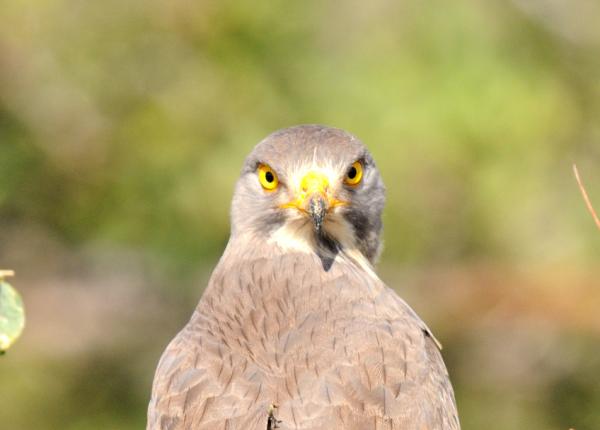Did You Know?
- In parts of its range, the Grasshopper Buzzard outnumbers all other raptor species except Black Kites
- The Grasshopper Buzzard is the only species in Africa in the the genus Butastur
How The Peregrine Fund is Helping
Our efforts in scientific research, habitat conservation, education, and community development help conserve birds of prey around the world. We also supply literature to researchers from our avian research library, which helps scientists around the world gather and share important information on raptor conservation. We also run the Global Raptor Impact Network which gives raptor researchers tools to more efficiently conduct their own studies while contributing to a global program. GRIN also provides citizen scientists a way to participate in raptor science and conservation.
Where They Live
The Grasshopper Buzzard is found in a narrow zone mostly north of the equator, in subSaharan African. It prefers to nest in open, dry thorn savanna and when not breeding, it spends its time in open habitats. At least in some parts of its range, it does frequent recently burned areas as well.
What They Do
The Grasshopper Buzzard is a beautiful bird of prey, distinguished mostly by its rufous underparts and wing coverts. Researchers have described this medium-sized, diurnal hawk as "sluggish" since it often remains on the same perch for long stretches of time. However, this species is also migratory, sometimes traveling around 2,500 km within sub-Saharan Africa to arrive at areas with more cover and food availability.
Why They Need our Help
The Grasshopper Buzzard is categorized as a species of Least Concern. This species tends to be abundant in many areas where it lives. However, loss of habitat through overgrazing is a threat to this species. Drought and pesticides might also have a negative affect on this species in the long-term.
What They Eat
Given its name, you might probably guess that the Grasshopper Buzzards eats a lot of grasshoppers! And you would be correct. It takes a number of large insects, especially grasshoppers. But it will also hunt termites, beetles, and spiders, and other arthropods. But, just like most predators, these hawks are opportunistic and will catch other animals when the opportunity arises, including small birds, and some reptiles and rodents.
This hawk usually captures its prey from the ground. It will sometimes walk or run after its prey, or if it spots food from a perch, it will swoop down to catch it. It also pursues its prey in short, aerial pursuits. Sometimes, these hawks will follow flocks of Cattle Egrets or larger game animals, waiting for them to flush out insects or other animals they can snatch up relatively easily. Small flocks of 50-100 individuals might be seen together during.
Nests, Eggs, and Young
Grasshopper Buzzards build strong stick nests which can measure around 35 cm wide and 40 deep. They will build their nests relatively low in the fork of a tree, which they line with green leaves.
The female will lay 1–3 eggs, which need to be incubated for around 30 days. When the nestlings hatch, they are covered in white or off-white down. They will grow quickly and after around 36 days they will be ready to fly from the nest for the first time. They will remain with their parents for the next 3 weeks or so before they are able to hunt and survive on their own. They will then leave their parents' territory and venture out on their own.
Grasshopper Buzzard and the World Center for Birds of Prey
The World Center for Birds of Prey offers fun ways to learn about birds of prey. Interactive activities, tours, interesting videos and a children's room with activities from coloring sheets to quizzes to costumes and a touch table are available for the curious mind. We also have several birds of prey on display year-around, including a number of hawk species such as a Red-tailed Hawk and a Harris' Hawk. Knowledgeable staff and volunteers are on hand to answer any questions you may have about Grasshopper Buzzards or any other bird of prey.
References:
Global Raptor Information Network. 2021. Species account: Grasshopper Buzzard Butastur rufipennis. Downloaded from http://www.globalraptors.org on 31 Aug. 2021
Kemp, A. C., G. M. Kirwan, and D. A. Christie (2020). Grasshopper Buzzard (Butastur rufipennis), version 1.0. In Birds of the World (J. del Hoyo, A. Elliott, J. Sargatal, D. A. Christie, and E. de Juana, Editors). Cornell Lab of Ornithology, Ithaca, NY, USA. https://doi.org/10.2173/bow.grabuz1.01









